Nintendo's most-failingest peripherals
Each and every one will (not) change the way we play games
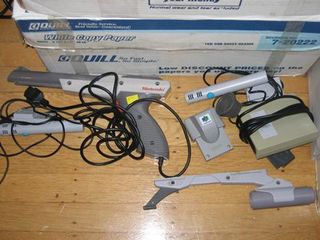
Above: A small sampling of various Nintendo junk
Naturally most of them disappeared without fanfare, and support dried up as another object neared release. A rare few made a positive difference (Zapper, NES Satellite, Rumble Pak etc), but the vast majority were cast off with much haste. Collected here are the best of the worst, and no, there’s no Power Glove because that shit was made by Mattel.
Robotic Operating Buddy (R.O.B.)
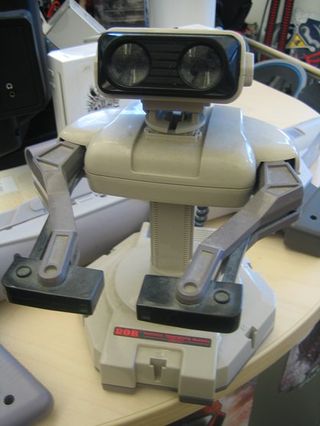
What it was supposed to do: Trick people into thinking the newly launched NES was a sophisticated computer, and not a videogame machine. Following the games crash of ’83, retailers and consumers were reluctant to touch anything pertaining to games, so ROB was meant to act as a super-cool pet robot that played games at your command.
What it actually did: Clumsily handled spinning gyros to play two forgotten launch games. It was loud, it was complicated and everyone quickly forgot it even existed – which was Nintendo’s plan all along, of course. Once the NES was in your house, Mario, Zelda and plenty of other top-tier games were ready to prove this industry still had life. A clever ruse, but a shitty peripheral.
Number of games that used it: Two. Literally two. One of the most failingest add-ons we can think of.
The Power Pad

What it was supposed to do: Capitalize on the fitness craze of the ‘80s by convincing parents that games could also count as exercise. You’d stand on the mat, run in place until your head exploded, then fold it up and toss it into the closet next to Teddy Ruxpin and some other clever 80s reference. The pad was heavily advertised as the next big thing, often with phrases like “You ARE the game!”
What it actually did: Well, it was only meant to lie on the floor and get stomped on, so in that measure it’s a total success. The catch is that the games generally required huge amounts of sprinting to perform the simplest tasks, so playing them for more than a few minutes was out of the question. Plus, only two companies seemed interested in developing titles for it – Bandai and Nintendo. Guess which one is at it again?
Sign up to the GamesRadar+ Newsletter
Weekly digests, tales from the communities you love, and more
Number of games that used it: 11 in Japan, six in the US, all from Nintendo and Bandai in a short span of time. In this case, Nintendo actually supported their product, but we didn’t bite. Shame on us?
Super Scope 6
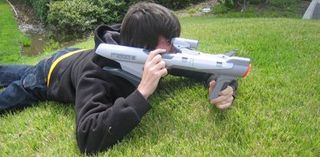
What it was supposed to do: Act as the next generation of light guns, and prove that Nintendo could support such a device longer than it did the NES’s Zapper. Plus it was a bazooka, which is way cooler than a pistol.
What it actually did: Impress people for a year with decent games like Battle Clash, then fade away. Like the Power Pad, it worked as intended but developers didn’t stick with it, so when Nintendo finally did get around to making another kickass game (Metal Combat), we were so god damn over it. Shame on us again!
Number of games that used it: 11, though a few are merely special Super Scope “modes” and not the full game. Others, like 1994’s Tin Star, could be played without the Scope, removing the need to own one at all. It and Sega’s Menacer were among the last attempts to treat console light guns as platforms, and even when done right recently (Time Crisis and the like) people tend to lose interest too quickly to justify supporting. That’s why today we have Wii Remote shells instead of actual light guns.
Game Boy Printer
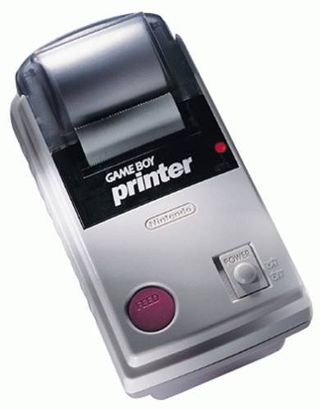
What it was supposed to do: Allow you to print all the wacky and zany pictures you took with your black-and-white Game Boy Camera. Each printed picture doubled as a sticker, so you could paste your blurry images all over the place if you suffered from a really specific type of narcissism.
What it actually did: Get discounted to $5 in about a year. First off, the camera itself was only fun in a “god this is so crappy” kind of way, the printer required specific Nintendo paper and the images themselves tended to rub away over time. All this and six AA batteries to print stamp-sized pictures that, on the best of days, look like this:
Number of games that actually used it: Oh, several games let you print shit out, but based on how fast this thing dropped in price, we’re guessing only in-store demos used up enough paper to warrant opening a new roll.
N64 Transfer Pak
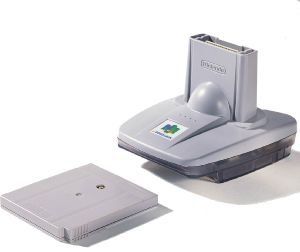
What it was supposed to do: Allow the Nintendo 64 and Game Boy to communicate and share data, ideally to unlock content or enhance gameplay in some way. We were told this idea of “connectivity” would change the way games are made, with many Nintendo-published titles that would take advantage of the add-on. Most prominent were the Pokémon Stadium games that let you move teams from your Game Boy carts to the N64 for battle.
What it actually did: It worked fine, but everyone on the planet assumed the Transfer Pak would let you play actual Game Boy games on a full-size television via the N64. GamesRadar has more than a few ex-retail thugs who recall child after child, parent after parent bringing their Transfer Pak back because it “didn’t work.” We weren’t wrong to assume it should play Game Boy titles, as Nintendo had released a Game Boy-to-TV adapter on the SNES six years prior. Stranger still is the fact that the Transfer Pak did let you play certain Pokémon Game Boy games on TV, but nothing else. What?
Number of games that used it: 16, though only five were released outside Japan, two of which were Pokémon Stadium games. The rest addressed the Pak as an afterthought, with features that were barely worth the hassle of digging it out of the closet. Even if it had allowed for GB-on-the-TV play, it would’ve fizzled anyway, as the Game Boy Player arrived for GameCube in 2003.
Up next: Junk that let you shout, swipe and sweat the day away
A fomer Executive Editor at GamesRadar, Brett also contributed content to many other Future gaming publications including Nintendo Power, PC Gamer and Official Xbox Magazine. Brett has worked at Capcom in several senior roles, is an experienced podcaster, and now works as a Senior Manager of Content Communications at PlayStation SIE.
Most Popular



